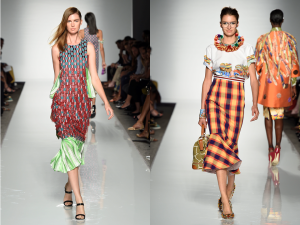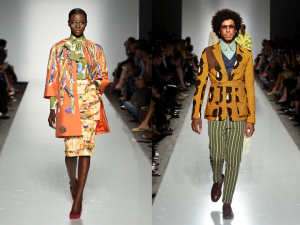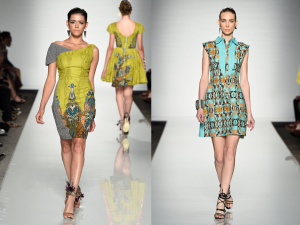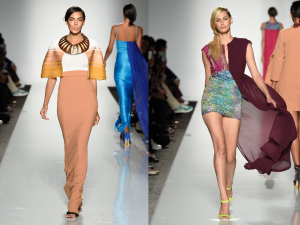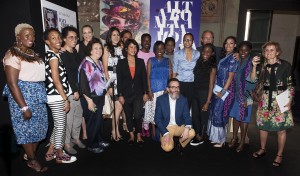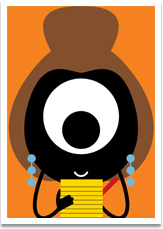Suzy Menkes reports from Altaroma, a new launch pad for emerging designers.
Jubilant prints in controlled silhouettes, joyous embellishment to sporty shapes – the Beat of Africa resounded from the catwalk at this week’s Altaroma event.
Ever since half-Italian, half-Haitian designer Stella Jean won the Who Is on Next award in 2011 – and was subsequently chosen by Giorgio Armani to show in his Milan premises – she had become a torch-bearer for Africa in fashion.
Her Stella Jean collection was a model of exuberance and restraint. My heart lifted on seeing her vivid patterns and graphic checks, controlled by slimline outfits – for both sexes.
A pair of slender trousers, the waist rising high, would be teamed with a light coat – perhaps with a pattern of green leaves exploding at the back.
It is to Stella Jean’s credit that she has taken her line forward in modern Italian style, while using the fabrics of Burkina Faso and exploring Kenya, Maili and Haiti.
“Diversity is richness,” said Stella Jean, expressing her excitement in introducing African prints and embellishment to Asia.
Beat of Africa is brought by the International Trade Centre’s Ethical Fashion Initiative in collaboration with Altaroma. The International Trade Centre is a joint agency of the United Nations and World Trade Organisation.
Lisa Folawiyo from Nigeria was this year’s special guest, and she opened the show with a powerful mix of pattern, colour and texture: a grass-green foliage-patterned blouse, morphing into a turquoise and pink pinafore and pink plaid skirt. (Add a colourful clutch bag to this sophisticated fashion recipe.) I felt that these were clothes out of Africa – but for the world to wear.
Omoyemi Akerele, the creative and managerial force behind Lagos Fashion and Design Week, underscored the importance of having a platform in Rome for African designers.
Duaba Serwa by Nelly Aboagye and Mina Evans-Anfom also showed fine collections with a smart mix of exuberant colours and prints and restrained shapes.
Simone Cipriani, the master force behind the Beat of Africa project received wild applause – but chose to concentrate on the future.
He talked about having set up a manufacturing plant in Ghana, dedicated to designers’ work, and the importance of finding both patrons and platforms for African talent.
“And now, for 2015, we have to take on the issue of the internet,” said Cipriani. “We now have a lot of brick-and-mortar partners. Now we have to sell online.”

